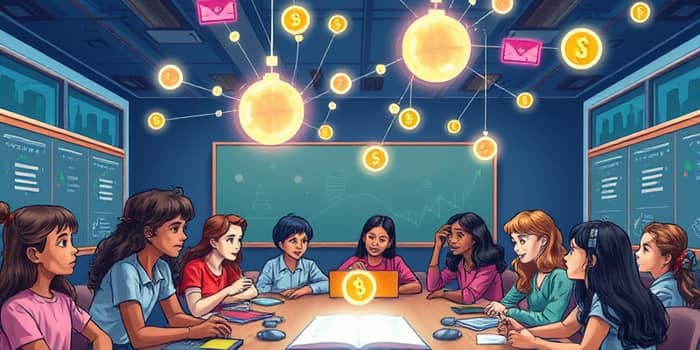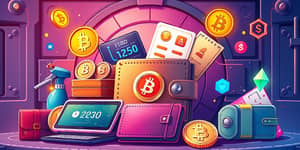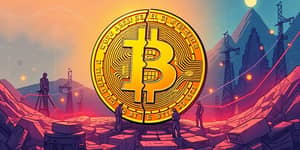Blockchain technology is revolutionizing how we accumulate, validate, and share financial knowledge. By leveraging decentralized networks, educators and learners gain new tools to build trust and transparency in financial training programs.
Across the globe, a widening gap in financial literacy threatens economic inclusion. Blockchain’s promise of secure, portable credentials offers an inspiring pathway to empower individuals and bridge educational divides worldwide.
Understanding the Foundations of Blockchain
At its essence, blockchain is a decentralized, immutable digital ledger that chronologically logs transactions across multiple nodes. Protocols like proof-of-work or proof-of-stake ensure that data is only appended after network consensus, eliminating single points of failure and centralized control.
Each new block references the previous one through cryptographic hashing, creating a chain that is both transparent and tamper-proof. This structure furnishes a complete audit trail, so anyone can trace the origin and authenticity of every recorded event.
Transforming the Way We Learn Finance
In traditional education, credentials can be lost, forged, or subjected to lengthy verification processes. Blockchain introduces secure, transparent, and tamper-proof educational records from digital diplomas to micro-credentials, allowing students to share verifiable achievements instantly and globally.
Decentralized communities emerge as learners endorse each other’s progress. By integrating blockchain with digital identity systems, participants in remote regions can hold records independently, unlocking courses and opportunities that were once out of reach.
- Verifiable digital certificates
- Real-time progress tracking
- Automated token rewards
- Global access to resources
Beyond certification, blockchain powers microfinance solutions: cross-border tuition payments, pay-per-module pricing, and self-executing smart contracts for rewards that instantly deliver tokens or micro-grants when students hit specific learning milestones.
Investment Trends and Global Impact
In 2019, investors fueled the blockchain revolution with approximately $2.9 billion in funding, an 89% jump year-over-year. Corporate forecasts projected this figure to climb to $12.4 billion by 2022, while PwC predicts a potential $3 trillion in annual business value by 2030.
Worldwide blockchain wallets expanded from 10 million in 2016 to over 40 million by 2020. Although only 0.025% of global GDP was directly held on-chain as of a recent study, this figure is poised for rapid growth as adoption accelerates.
These investments are fueling innovations that deliver real-time verification of student achievements and empower educational institutions to measure learning outcomes with unprecedented accuracy.
Challenges and the Road Ahead
A persistent digital divide means millions lack reliable internet connectivity or access to modern devices. To ensure equitable learning, policymakers and stakeholders must pursue inclusive platform designs for all learners and invest in infrastructure and localized training programs.
Blockchain’s technical complexity can intimidate educators and administrators. Overcoming this obstacle requires effective professional development, hands-on workshops, and collaboration with technology partners to build user-friendly interfaces and intuitive workflows.
Security remains a priority: smart contracts and blockchain applications must be rigorously audited to prevent vulnerabilities. Clear regulatory frameworks and industry standards are vital to guard against misuse, fraud, and unregulated token issuance.
Real-World Success Stories
Major corporations like IBM and Microsoft are pioneering blockchain-driven certificate platforms. IBM’s digital diploma pilot allows graduates to instantly share verifiable credentials with employers worldwide, reducing hiring delays and administrative costs.
In some countries, educational ministries are leveraging blockchain for student record interoperability. A national initiative in Eastern Europe now enables learners to carry their academic transcripts across borders, illustrating how technology can foster academic mobility.
These systems play a crucial role in ensuring equal opportunity for all learners by granting immediate recognition of achievements, regardless of geographic or socioeconomic barriers.
For educators seeking to experiment, start by collaborating with open-source blockchain communities, integrating micro-credentialing modules into existing syllabi, and partnering with local enterprises to pilot token-based rewards. These steps lay the groundwork for scalable, impactful initiatives.
Conclusion: Embracing a Decentralized Financial Education Future
The transformative power of blockchain in financial education lies in its capacity to enhance trust, expand accessibility, and motivate learners through tangible rewards. As more stakeholders commit to this vision, decentralized learning ecosystems will flourish.
By confronting challenges head-on, sharing best practices, and investing thoughtfully, we can harness blockchain’s potential to create a more inclusive, transparent, and inspiring landscape for financial literacy. The journey toward empowered learners and resilient education systems begins now.
References
- https://builtin.com/blockchain
- https://www.investopedia.com/terms/b/blockchain.asp
- https://aws.amazon.com/what-is/blockchain/
- https://www.ibm.com/think/topics/blockchain
- https://www.mckinsey.com/featured-insights/mckinsey-explainers/what-is-blockchain
- https://sustainability-directory.com/question/how-can-blockchain-technology-be-used-to-improve-financial-literacy/
- https://www.weforum.org/stories/2016/06/blockchain-explained-simply/
- https://en.wikipedia.org/wiki/Blockchain










